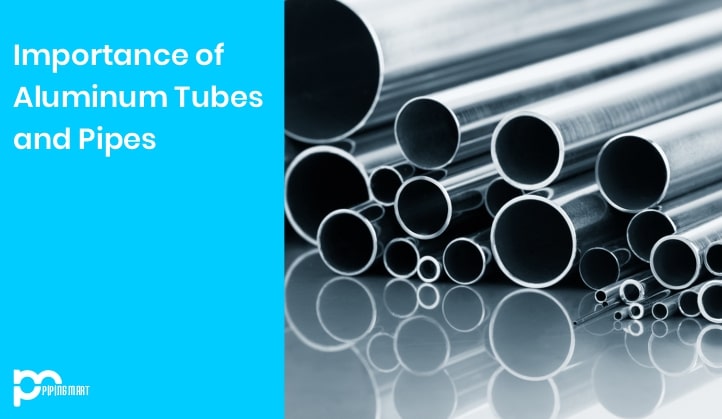Overview of Pipes and Tubes
A Pipe is a round tubular for the flow of fluids and gasses, defined by a nominal pipe size providing a rough representation of the pipe conveyance capacity; a Tube is a round, rectangular, square or oval hollow segment determined by outside diameter and wall thickness, represented in inches or millimeters.
The options may seem overwhelming when selecting a tubing type; both aluminum and stainless steel come in a variety of alloys and tempers, each with their own physical and mechanical properties. That metal has specific general properties to all of its alloys.
Why Aluminum?
Aluminum is noteworthy for its low density and its property to resist corrosion through the passivation process. Aluminum and its alloys are essential to the aerospace industry and are significant in the automotive and building sectors, such as façade design and window frames. The most important components in aluminum are the oxides and sulfates.
Aluminum tubing extends from consumer items, recreational merchandise and machine parts and automotive and manufacturing across a wide range of industrial applications. Suppliers respect aluminum for its strength, because it is only one percent of the steel weight. Because of this versatile blend of strength and flexibility several structures profit from the effective use of aluminum tubing. Aluminum tubing, given its lightweight, provides a greater volume of tubing per weight than steel. Many products benefit from the use of a lighter tubing material, particularly those needing a mobility degree such as wheelchairs and outdoor furnishings.
For the tubing and pipe the most common aluminum alloys are 2024, 3003, 5052, 6061, 7075. Aluminum exceptionally well absorbs aluminum heat making tubing which is a great candidate for temperature control applications such as refrigerators, solar power and air conditioning systems. The lightweight and strength of the aluminum tubing often results from items such as hydraulic systems, fuel lines, braces, and frames. Aluminum is a component of many different alloys. Aluminum forms solid alloys, with several differences of magnesium and silicon. Because of its increased weldability and outstanding tolerance to corrosion, manufacturers use the aluminum square tube alloy 6061 for many medium-to high-strength applications. It is also the aluminum tube type which is least expensive to use.
Where are Aluminum Tubes and Pipes used?
Aluminum pipe and aluminum tube are mostly used for various industrial or building uses, but the use of aluminum pipe and the aluminum tube is also easily embraced by homeowners and auto manufacturers and has been modified for common household use.
In the demand to interior furnishings aluminum pipes are also used. Things are generally constructed of wrought iron from canopy beds and bedside tables. Aluminum tubes are a lightweight choice which gives a futuristic feel to the room. To threaded forms of tubing a variety of fasteners are given. Aluminum Pipe is a machined part widely used for all types of industrial projects where lightweight and corrosion resistance are the primary concern. Printed in both 6061-T6 and 6063-T6, 6063 has a smoother texture than 6061 and is more bendable.

Pipingmart is B2B portal specializes in industrial, metal and piping products. Also, share latest information and news related to products, materials and different types grades to help business dealing in this industry.




